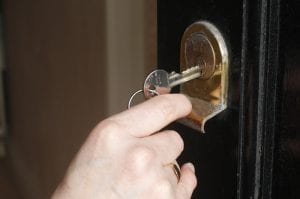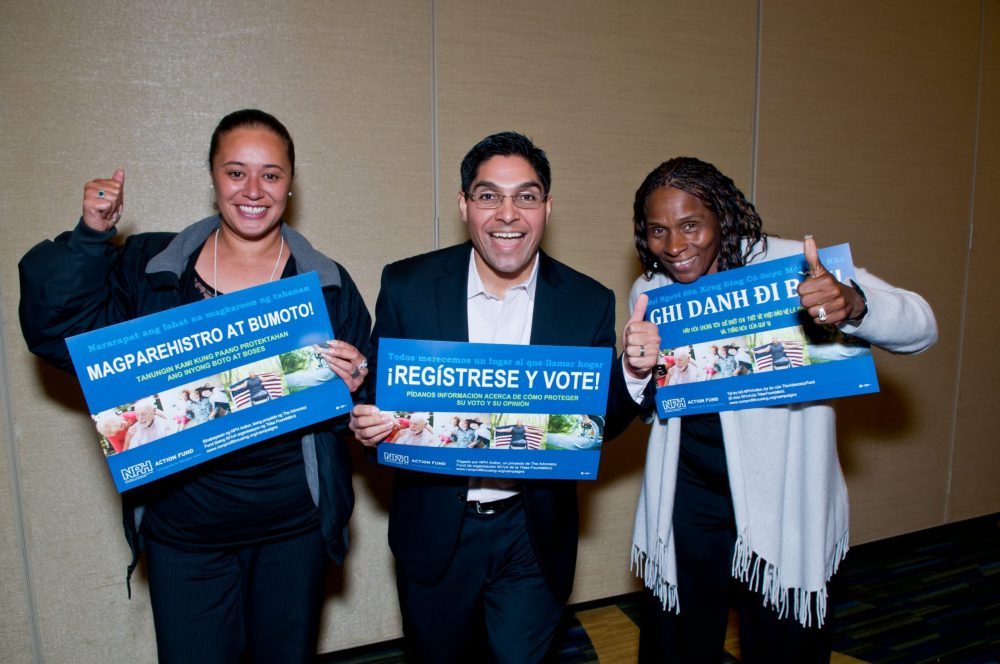
Photo by Alan Cleaver, via flickr, CC BY 2.0
Anyone who works in affordable housing or follows housing issues regularly probably hears the 30 percent affordability standard referred to daily. The idea that your housing is considered unaffordable if you pay more than 30 percent of your income on it is deeply embedded in many aspects of housing policy and practice.
- It’s a payment standard—the rents people in public housing or with Housing Choice Vouchers are expected to pay are set at 30 percent of their income.
- It’s a way to measure affordability of a given unit, or to set rents to achieve affordability, often in return for a subsidy—a unit is considered affordable to people making a certain income if the rent is 30 percent or less of that income.
- And it’s a way to measure our housing crisis by tracking the number of households who are “cost burdened,” or paying more than 30 percent of their income in rent.
The standard has been a lifesaver for many people. Near the end of Matthew Desmond’s best-selling book, Evicted, when one person manages to finally get into a decent apartment where the rent is limited to 30 percent of his income, it is a miracle, drastically changing his life compared to the experiences of others who are struggling with rents that eat up nearly all of their incomes for housing of marginal quality. The National Low Income Housing Coalition map that shows there is no county in the country where a full-time, minimum-wage worker can “afford” a two-bedroom apartment was so simple and direct that it has repeatedly gone viral at a time when competition for attention is fierce.
And yet, when you stop to think about it, the simplicity of the 30 percent standard is also its downfall. We don’t expect people of differing incomes or family sizes to pay the same percentage of their income in taxes—why would the same percentage work for housing costs? At the least it doesn’t make sense for very high or very low incomes.
The following collection of articles explain some of the problems with relying on only the 30 percent standard, and includes original research from three different perspectives that shows what applying a different, more accurate type of measure might mean for housing policy. The alternative approach—dubbed the residual-income method—measures whether a household has enough money left after paying for housing to meet their basic needs. This, after all, is what actually matters to those households, rather than income ratios.
- After Paying for Housing, How Much is Enough for Basic Necessities? by Miriam Axel-Lute
- The 30 Percent Standard’s Blinders by Daniel Kay Hertz
- In Defense of the 30 Percent of Income to Housing Affordability Rule —In Some Cases by Christopher Herbert, Alexander Hermann, and Daniel McCue
- Housing Need Is Even More Skewed by Income Than We Thought by Andrew Aurand
- The 30 Percent Rent-to-Income Ratio Doesn’t Add Up in New York City by Richard Heitler
- The Secret History of AMI by Jarrett Murphy
- When Deep-Income Targeting Doesn’t Hit the Mark by Tom Collishaw
However, the method presents its own very big question: How much is enough for non-housing basic needs? That is a question that our authors have chosen to answer in different ways, which affects some of their conclusions. To help you sort out these different approaches and which might make the most sense in which scenarios, we’ve compared them here.
Abandoning a quick and easy-to-apply shorthand for housing affordability doesn’t seem like a good idea, especially in an era when appetite for nuance may be lower than usual. But when we’re crafting policies and programs, incorporating more nuanced measures of actual housing need could direct our dollars to better directions. Have you employed any methods other than the 30 percent standard in your work— in setting rents or prioritizing applicants, for example? Have you wished for one?




The proactive advocates know the 30% standard should be applied to anyone, regardless of income. Preventing poverty should be higher on the agenda, as people earning higher incomes are not immune to financial catastrophe — many middle- and upper-middle income people can be a handful of paychecks away from homelessness, particularly if they’re overspending on housing.
I’ve been told the IRS uses basic cost of living standards by ZIP code to determine if a one is underreporting income, in other words if one appears to be living beyond what is indicated on one’s taxes they will know. My tax preparer showed me some of the guidelines and they are similar to a 30% means test for housing. What they fail to take into account, however, is that not everyone lives the same typical “American Lifestyle”. A monthly clothing budget? The only new clothes I have purchased in over a year are my work boots. My income has ranged wildly over the course of my 20+ years of home-ownership, and I have been able to stay in my home only by making drastic cuts in lifestyle spending. We have never owned a new vehicle, we shop at thrift stores, we rarely eat outside the home, etc. I am certain that our family of four’s AGI would qualify me for housing assistance in my prosperous county; I am just as certain that there are people who need those assistance dollars much more than we do.
My point being, gross generalizations might work well enough to make broad policy decisions, but when it comes to putting a roof over my head (or raising my already high taxes to put roofs over other people’s heads) there needs to be more flexibility in calculating need, and more details considered before granting subsidies. These calculations can be wildly skewed by housing price bubbles. 1 in 5 families in our county have children in poverty by some calculations, and while we fit that bracket by cost of housing calculations, I would never consider ourselves impoverished. My children certainly don’t think so. It helps that my wife and I both work every day to stay in our house. I guess I am saying it’s all relative.
If I had a magic wand the one thing I would do to help keep fringe working class people afloat would be to drastically reduce or cancel interest on their debts, esp. credit card interest & mortgage interest. Debt keeps people down like nothing else; and interest’s only purpose seems to be generating profit for the lending institutions.
When I started my career, the standard was 25% of income for housing. People have debated this issue since back then and they will probably always debate it. One reason is because there is no definitive answer.
I generally support the 30% rule. While it isn’t perfect, it is “relatively” equitable and easy to administer. Some people have higher living costs (medical, child care, student debt, etc) which make 30% more of a burden. Others receive support that is not counted as income – SNAP, Medicaid, tax credits, etc. For them, 30% is easier to manage.
In reality, however, most affordable housing doesn’t even follow the 30% rule. Privately owned affordable housing generally sets rents for individual units based on the income range of the targeted tenants. For example, the rent for units targeted for households who earn 50% of AMI is set at 30% of the 50% income limit for a household with one more person than the bedrooms in the unit.
If a 2 BR unit is occupied by a three-person household that actually earns 40% of AMI, they will pay 37.5% of their income for housing. If they earn 30% of AMI, they will pay 50% of their income for housing. However, if that household only has two persons (e.g, parent and child of the opposite sex) and earns 30% of AMI, their rent will be well in excess of 50% of their income.